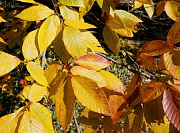 |
Family Fagaceae – Beech, Chinkapin and Oak Oak trees are a symbol of strength and stability; acorns are symbolic of enormous potential in a small package. -Oak & Beech Index- |
Custom Search
|
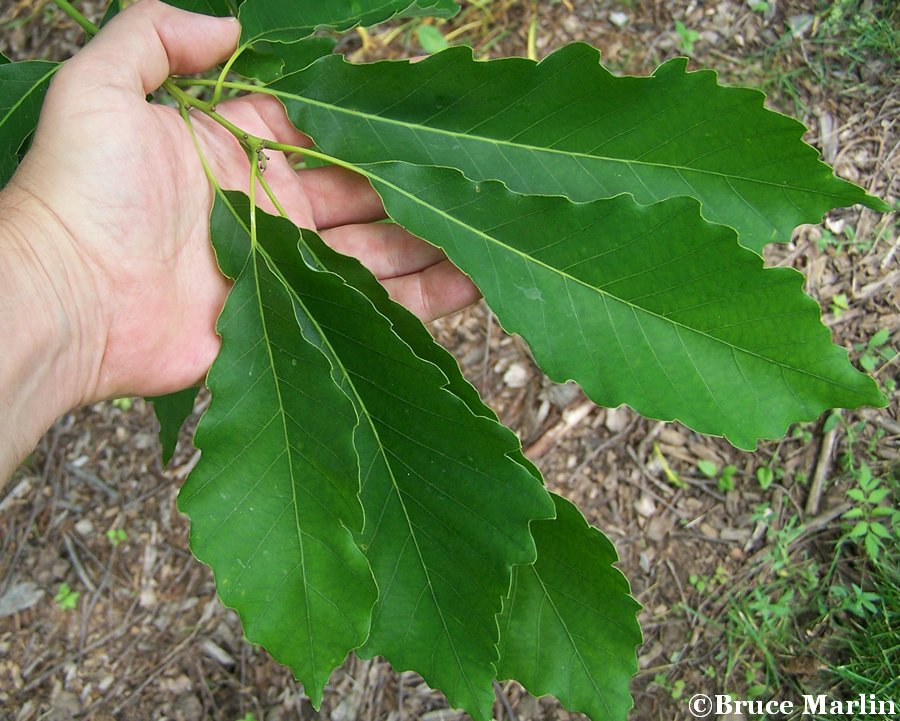 Chinquapin Oak foliage |
|
There are about 900 species in this family worldwide, about 65 trees and 10 shrubs of which are native to North America. Native to the northern hemisphere, the genus Quercus contains about 600 species, including both deciduous and evergreen species (often referred to as 'live oaks'). Although many exhibit the characteristic lobed leaves, some have serrated leaves while others may have a smooth margin. Perhaps most easily recognized shared feature is the acorn (the fruit), borne in a cup-like structure known as a cupule.
|
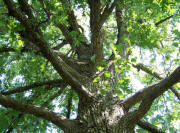 White Oak |
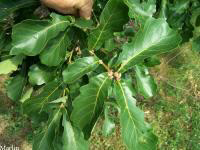 Liaotung Oak |
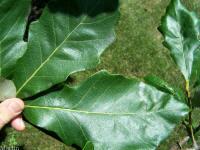 Swamp White Oak |
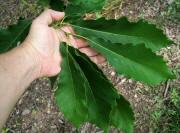 Chinquapin Oak |
Oak is susceptible to forest tent caterpillars. |
Since the early 1990s, oak and tanoak (Lithocarpus densiflorus) have been dying in the coastal counties of California [1]. Since then, Phytophthora ramorum has been expanding its range in coastal California, killing millions of trees. This epidemic has caused damage to public and private property, economic impact on nursery, gardening and logging industries, and increased the cost of implementing regulatory activities. Many are worried that large-scale tree mortality will have profound long-term environmental consequences, by changing the structure of plant and microbial communities, altering landscape ecological structure and function, and increasing forest-fire hazards. |
|
Phytophthora ramorum is known to infect over one hundred species of forest shrubs and trees. On oak and tanoak trees, P. ramorum causes bleeding bole cankers that can lead to relatively rapid mortality; hence sudden oak death. Other hosts such as California bay laurel (Umbellularia californica) suffer mild leaf-blight or twig-dieback symptoms and are major sources of inoculum for infection of oaks and tanoaks. There is no evidence for sporulation of this pathogen from true oak species. A recent collaboration of scientists from all over the world published a study of the spread of invasives, using Phytophthora ramorum to illustrate how shortfalls in their understanding of how cryptic infection spread can render management applications inappropriate. |
Gypsy moth larvae can defoliate oak trees |
 English Oak |
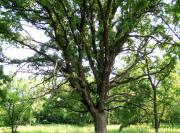 Bur Oak |
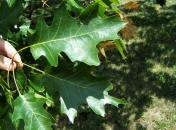 Schoch Oak |
 Pin Oak |
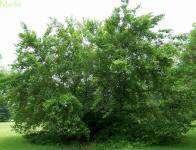 American Beech Tree |
 Chestnut |
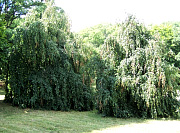 Weeping European Beech |
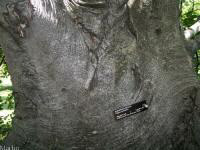 European Beech |
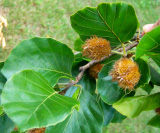 European Beech |
 Copper Beech |
 Red Oak |
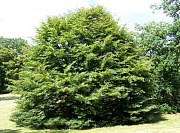 Cut-leaved European Beech |
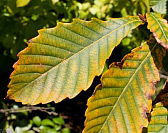 Mongolian Oak |
 Chestnut Oak |
 Shumard Oak |
Scarlet Oak |
Durmast or Sessile Oak |
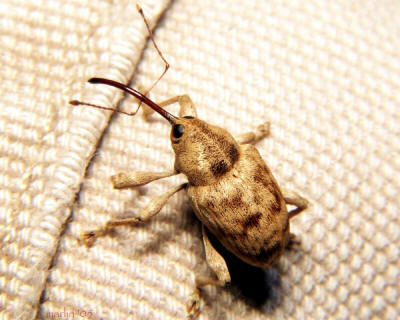 Acorn Weevil, Curculio sp. |
More than 80 percent of mature scarlet oak acorns may be destroyed by insects. Most insect damage occurs after acorn fall. The most important insect pests are nut weevils Curculio spp. (left), moth larvae (Lepidoptera), and cynipid gall wasps (Cynipidae).
The proportion of uninfested acorns is usually highest in years of greatest seed production. Scarlet oak acorns are a choice food for eastern gray squirrels, chipmunks, mice, wild turkey, deer, and birds, especially blue jays and red-headed woodpeckers. One-third to one-half of acorn losses have been attributed to removal by birds and squirrels while the acorns were still on the tree [2]. |
| References 1. USDA, APHIS, “Phytophthora ramorum/Sudden Oak Death” 2. Filipe JAN , Cobb RC , Meentemeyer RK , Lee CA , Valachovic YS , et al. 2012 "Landscape Epidemiology and Control of Pathogens with Cryptic and Long-Distance Dispersal: Sudden Oak Death in Northern Californian Forests." PLoS Comput Biol 8(1): e1002328. doi:10.1371/journal.pcbi.1002328 |
| Tree Encyclopedia / North American Insects & Spiders is dedicated to providing scientific and educational resources for our users through use of large images and macro photographs of flora and fauna. |
Tree Encyclopedia |

